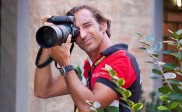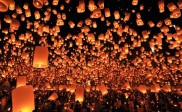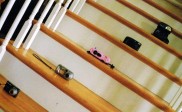The Magic of Light Painting
Light painting is a great way to unleash your imagination and creativity. Your light ‘brushes’ can vary, from an ordinary torch or flashlight, to sparklers and LED lights. Once you start playing with this lighting technique, you will quickly get addicted.
Three Common Light Painting Techniques
You can use light to ‘paint’ the subject– with the use of a light source like a flashlight; you can illuminate the subject or the scene by moving the light in strategic ways. Your subject can be as small as a cup or as large as a building or tree. However, your light must be strong enough for the camera to capture the details. Move the light source as if you are painting the subject. This must be while the camera’s shutter is open. To show the shape of the subject, try outlining it with your light. Do not shine your light on the areas where you want shadows to remain. If your subject is huge, like a tree or a building façade, you will need something stronger than a regular flashlight. Floodlights or searchlights often work great for large subjects and scenes.
You might have to practice light painting because every movement of your light source has an effect on how the subject is illuminated. If your light lingers for a long time on a certain spot, that area will be brighter than the rest. Since your movements will most likely not be exactly the same with every shot, you can get different results even if the subject is in the same spot during the entire shoot.

Photo by Lightstaff

Photo by jmayer1129
You can use the light source to paint pictures or words in the dark – this is another way to approach light painting, and you can really stretch your imagination and come up with entertaining results. In this scenario, the light source is used to create various visual effects such as drawings, text, and patterns. These can be abstract lines and pretty shapes, or doodles such as stick figures. Instead of directing the light source towards a subject, it is facing the camera lens, which captures the light trails of the moving light. Aside from drawings, you can also show messages as you write in the air. Simply turn off the light source if you want to end the light trail, and turn it on again to paint a different area.

Photo by vancouverfilmschool
Of course, you can do a combination of the two above mentioned light painting methods, and you can illuminate the scene and make a light scribble all in the same shot. There are no set rules to follow, and it is a technique that relies more on trial and error and experimenting to get the perfect shots.

Photo by Tim . Simpson
Practical Light Painting Tips
Light painting does not require expensive equipment and elaborate setups. However, there are still a few essential things to keep in mind to get the most out of this technique:
• Your camera should be able to take long exposures. Your surroundings will be dark to pitch black, and your shutter has to be left open for some time to capture adequate light. A shutter speed of 3 seconds or longer is ideal.
• Turn off light sources that are not part of the setup. Any form of light might be captured by the camera, especially during long exposures. Factor in the additional light sources that can affect your shot, such as the moon or nearby streetlights.
• Play with your light sources and try many kinds such as colored LED lights, sparklers, and fiber optics. Each type of light source will have its own distinctive appeal.
• Use a tripod to avoid blurriness and camera shake. You can place your camera on a flat and stable surface if you don’t have a tripod. Make sure not to trip on your camera in the dark!
Subscribe to our RSS feed OR Follow us on twitter
Want to know More about light painting? Check out light panting techniques



